Eventos em Cuba
Veja abaixo uma lista mês a mês dos principais eventos realizados em Cuba ao longo do ano.
Destaques do Ano
- Dia do Trabalhador - maio
- Carnaval de Santiago de Cuba - julho
- Maratona Marabana - novembro
- Parrandas de Remedios - dezembro
- Réveillon em Havana - dezembro
Atenção: as datas dos festivais são aproximadas e podem variar a cada ano.
Janeiro
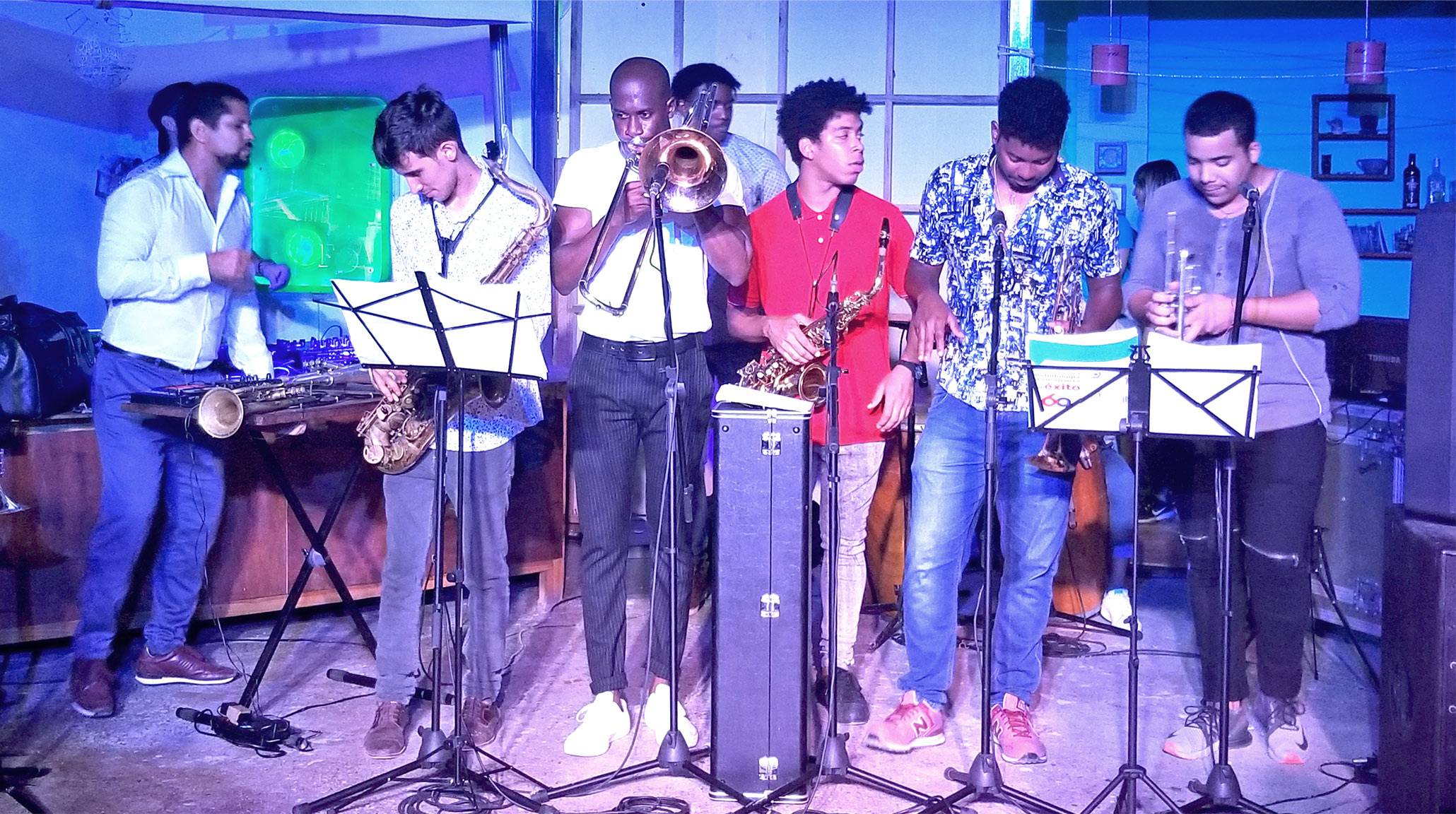
Festival de la Trova Longina 8 a 12 de janeiro
Festival de música realizado em Santa Clara. Recebe o nome da famosa canção de trova composta em 1918 por Manuel Corona, um dos mais notáveis músicos cubanos. O festival inclui uma caminhada até Caibarién, cidade natal do compositor. A trova é um estilo musical tradicional cubano, com canções populares e carregadas de emoção que seguem sendo lembradas até hoje.
Apesar de sua carreira de sucesso, Manuel Corona enfrentou muitas dificuldades. Foi ferido por um homem ciumento, o que comprometeu sua habilidade de tocar violão, e viveu seus últimos anos apenas com direitos autorais, em situação de pobreza.
Festival de Jazz de Havana Janeiro
Festival renomado internacionalmente, reúne talentos do jazz cubano e músicos convidados de todo o mundo. As apresentações ocorrem em locais como a Casa de la Cultura Plaza e o Teatro Nacional. A próxima edição está prevista para 25 de janeiro a 1º de fevereiro de 2026.
Fevereiro
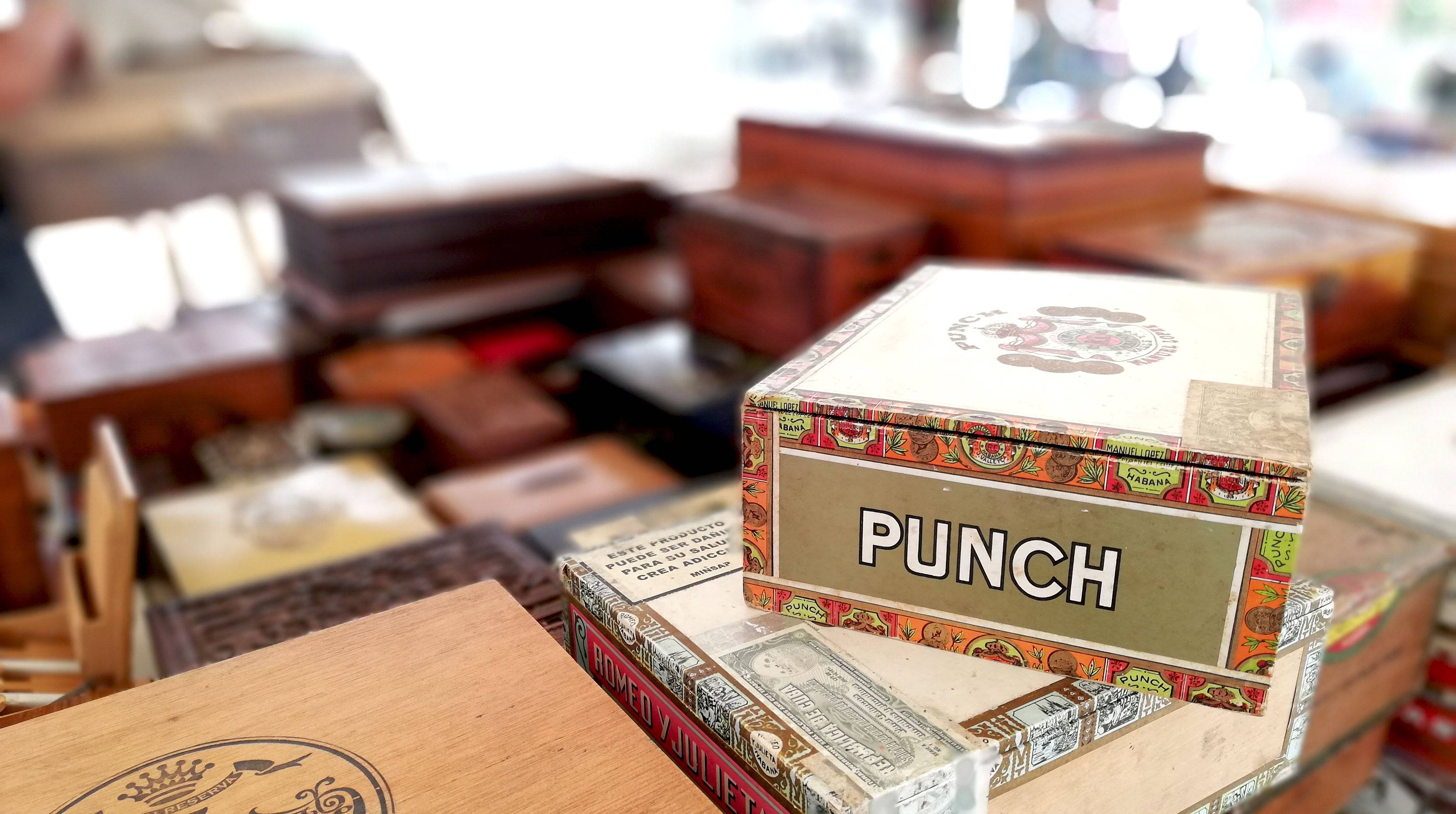
Feira Internacional do Livro de Havana 13 a 20 de fevereiro
Evento popular que atrai visitantes locais e internacionais, especialmente do mundo hispânico. Realizado na fortaleza La Cabaña, em Havana, e em outras cidades. Conta com venda de livros, palestras, apresentações teatrais, dança e sessões de cinema.
Festival del Habano 23 a 27 de fevereiro
O mais importante festival de charutos de Cuba. Apresenta marcas como Cohiba, Montecristo e Partagás. Inclui visitas a fábricas e plantações, palestras, demonstrações de torcedores e degustações. Site oficial do evento.
Março
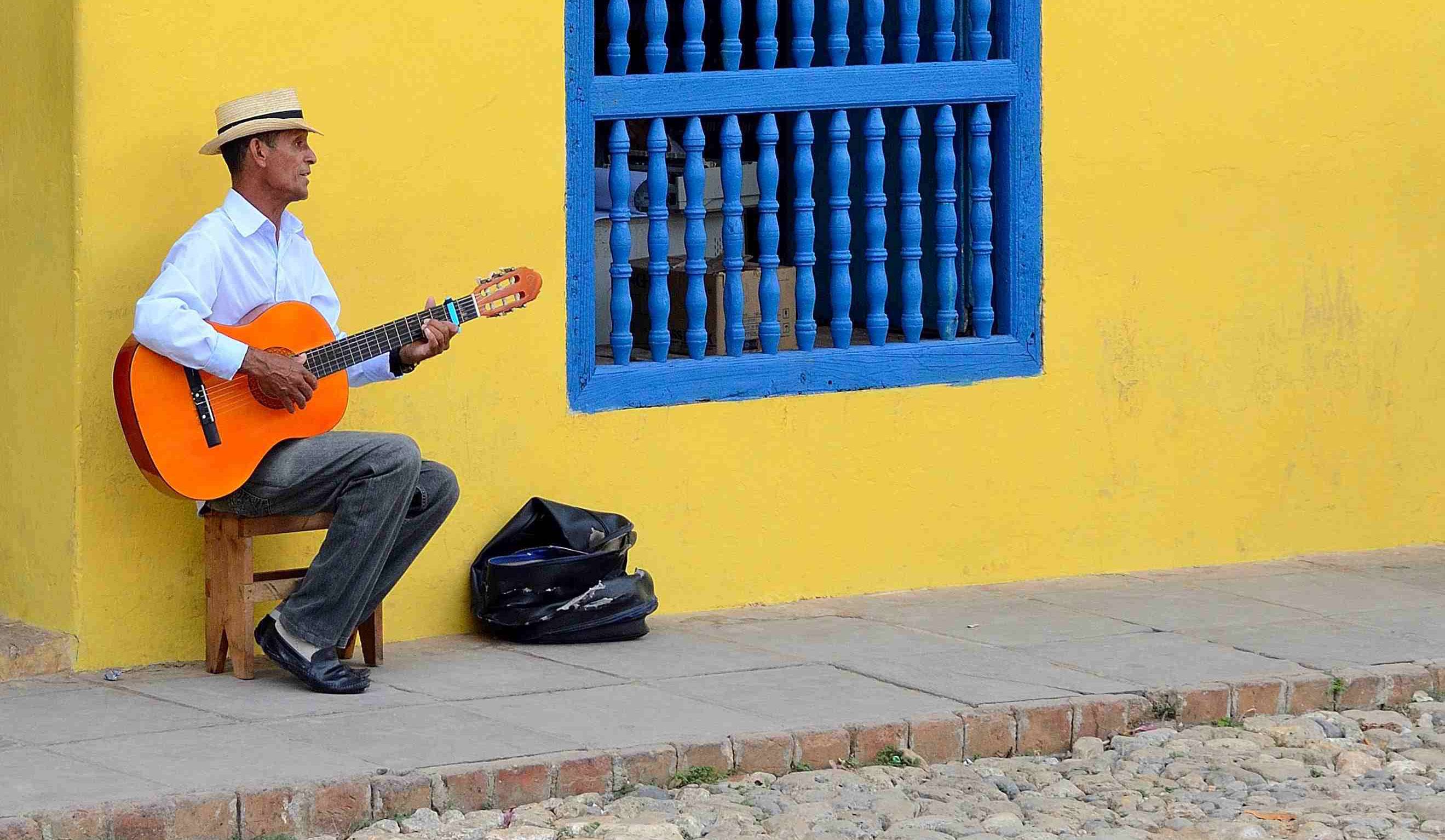
Festival Memorial Guillermo Barreto Março
Um festival de percussão em homenagem a um dos maiores percussionistas de Cuba. Sendo um país de ritmos, onde praticamente todo músico é também um percussionista habilidoso, ser reconhecido como um dos melhores não é tarefa fácil. Guillermo Barreto foi isso e muito mais. Ele foi um artista de destaque no famoso Tropicana Club, em Havana, no auge de sua popularidade durante os animados anos 50. A percussão em Cuba é uma arte reverenciada e levada muito a sério. É até mesmo um ato sagrado em muitas cerimônias religiosas afro-cubanas, onde o toque dos tambores serve para se comunicar com os deuses. O festival conta com apresentações, competições, concertos, palestras e discursos.
Festival Internacional de Documentários Santiago Álvarez Março
Este evento inclui uma competição de documentáriose demonstra o apoio de Cuba a um gênero de cinema que retrata realidades contemporâneas e dá voz a jornalistas, artistas e indivíduos independentes para comunicarem o que consideram interessante e importante no mundo atual. É uma alternativa à grande mídia, muitas vezes patrocinada por indivíduos ou organizações com interesses comerciais. A cidade anfitriã é Santiago de Cuba. Santiago Álvarez foi um cineasta cubano que faleceu em 1998, cujo trabalho incluiu técnicas de montagem consideradas inspiração original para o estilo moderno de videoclipe. Ele foi membro fundador do ICAIC - Instituto Cubano de Cinema. Veja mais no site oficial.
Festival Pepe Sánchez de Trova Março
Santiago de Cuba é a cidade anfitriã deste festival, que celebra o gênero musical Trova. A Trova possui diversos estilos e subgêneros, muitos dos quais estão representados no festival por músicos apaixonados por essa forma romântica de expressão musical. Há representantes da Trova Cubana mais tradicional – que envolve um estilo vocal de trovador, combinando música e poesia, geralmente acompanhados por um violonista tocando um violão clássico de cordas de náilon. Um estilo popular presente no festival é o Filin, que combina a Trova Cubana com o ritmo do bolero. Já a Nueva Trova é influenciada pela música popular britânica, norte-americana e brasileira, com letras que variam entre temas românticos e críticas sociais.
O festival teve início há mais de 50 anos, em 1962, e foi nomeado em homenagem a um compositor local de Santiago de Cuba, José (‘Pepe’) Sánchez, falecido em 1918. Ele é considerado o pai do estilo cubano de Trova. O festival culmina em 19 de março, conhecido como o Dia do Trovador, data de nascimento de Pepe Sánchez em 1856.
Procissão da Cruz em Trinidad Sexta-feira Santa
A Procissão da Via Crucis é uma tradição religiosa que percorre todos os anos, na Sexta-feira Santa, as espetaculares ruas coloniais de Trinidad, na costa sul de Cuba. Como parte das celebrações da Páscoa, a procissão teria sido originalmente criada para enganar piratas saqueadores, e segue um trajeto marcado por cruzes.
Abril
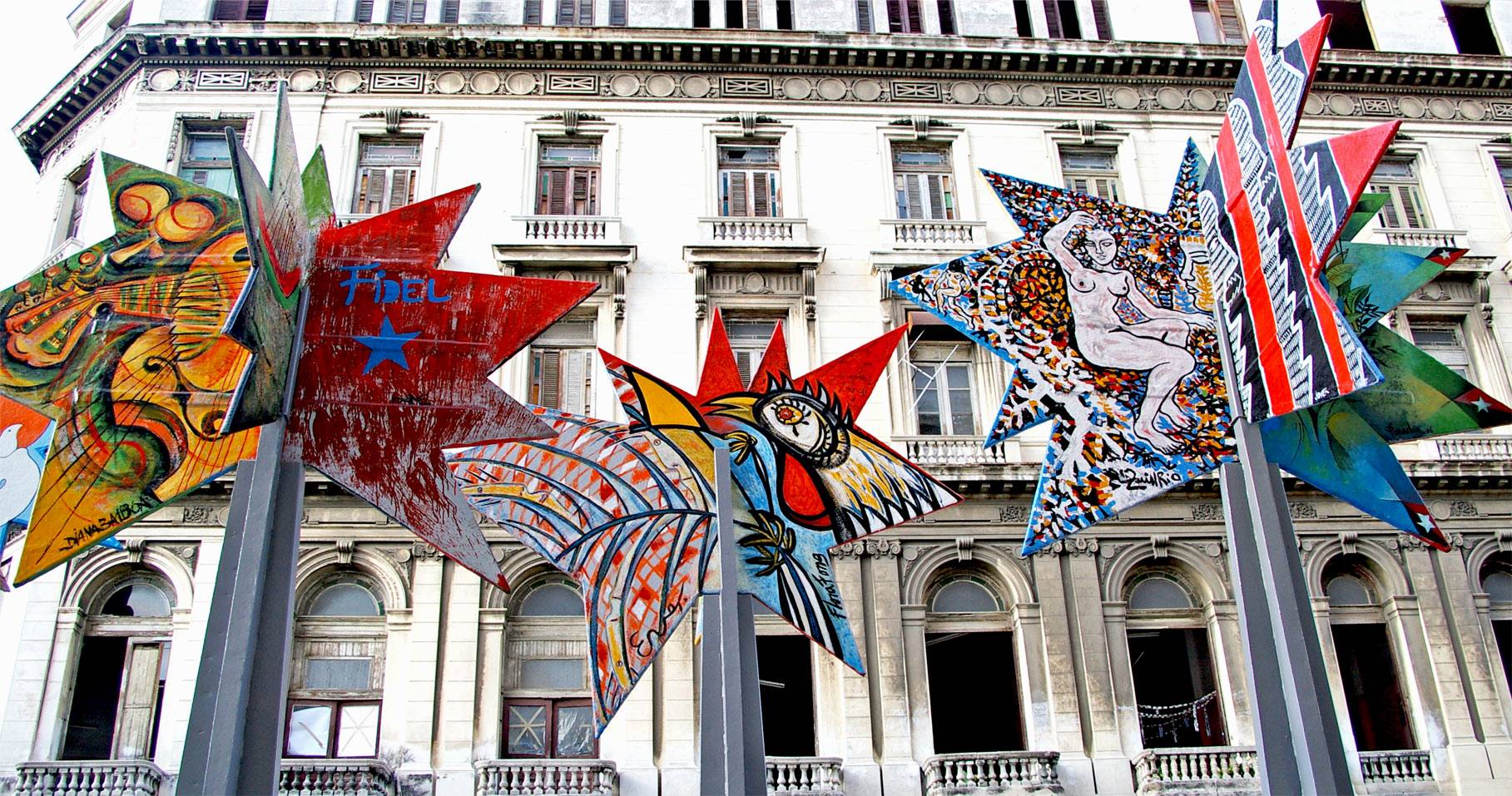
Bienal de Havana Nov 2026 - Fev 2027
A Bienal de Havana é um dos festivais de arte mais importantes e inspiradores de Cuba e, de fato, de toda a América Latina. Ela atrai a participação de centenas de artistas contemporâneos de todo o mundo e é um verdadeiro ímã para muitos amantes e apreciadores da arte. As obras são exibidas em inúmeras galerias, museus e espaços públicos espalhados por toda Havana. Se você estiver na cidade durante o evento, mesmo que não saiba que ele está acontecendo, provavelmente acabará se deparando com alguma exposição por acaso. As obras apresentadas não se limitam apenas a pinturas e esculturas, mas incluem também performances artísticas.
O evento foi realizado pela primeira vez em 1984 como uma competição entre artistas. Desde então, cresceu em magnitude e importância, e evoluiu para algo mais significativo — talvez hoje sua principal função seja reunir mentes criativas e provocar reflexão — algo que certamente é potencializado pelo cenário das ruas e edifícios de Havana, e pela história que eles carregam. A próxima edição da Bienal de Havana está prevista para ocorrer de novembro de 2026 a fevereiro de 2027.
Festival Internacional de Dança Cubana 6 a 12 de abril
Dançarinos, coreógrafos, professores e estudantes do Caribe e de outras partes do mundo se reúnem durante este evento como forma de promover a dança em uma região historicamente, etnicamente e linguisticamente diversa. O evento é realizado anualmente em Havana e é uma excelente oportunidade para apreciar apresentações de solistas importantes e companhias de outros países da região, além de também aprender e participar.
Festival de Cinema de Baixo Orçamento de Gibara Abril
A pequena e ventosa cidade costeira de Gibara, no leste de Cuba, normalmente tranquila, é o cenário deste festival de cinema que exibe algumas das melhores produções independentes, alternativas e de baixo orçamento do mundo.
Apesar de não ter o glamour de outros festivais independentes famosos, como o Sundance, isso também significa que o evento está em grande parte livre do lado comercial da indústria cinematográfica, o que muitas vezes resulta em uma experiência mais artística e autêntica.
Além das exibições de filmes, o festival inclui shows de música, apresentações teatrais, desfiles de moda e exposições de outras formas de arte, como fotografia, pintura e escultura.
Maio
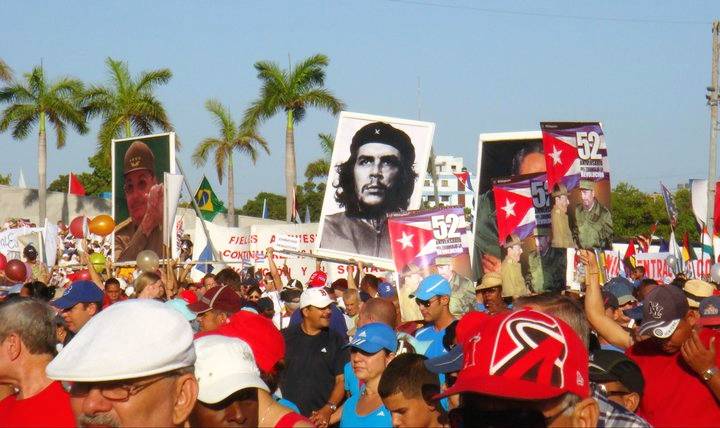
Dia do Trabalhador 1º de maio
O dia 1º de maio é uma data especial em Cuba. É quando o país homenageia os trabalhadores de todas as classes e profissões e celebra seu socialismo e orgulho nacional. O desfile começa ao nascer do sol e culmina, em cada cidade, na Praça da Revolução. Há apresentações culturais e musicais, além de discursos da liderança cubana. As pessoas se reúnem em grupos de trabalho ou de estudo e marcham até a praça carregando faixas e símbolos em apoio à Revolução. Uma grande parte da população participa, e organizações solidárias de outros países também se juntam ao evento.
Independentemente de você apoiar ou não a política cubana, a ocasião vale a pena ser vivida. Todos os anos, oferecemos roteiros que incluem a participação no desfile de Havana.
Também oferecemos a experiência May Day in Havana Experience, um tour de um dia que inclui a participação no desfile do Dia do Trabalhador em Havana, acompanhado por um dos nossos guias locais.
Veja maiores informações e fotos do desfile aqui: Primeiro de Maio em Havana.
Romerias de Mayo 2 a 8 de maio
Apesar do nome, esse evento tem um caráter mais pagão do que religioso, apesar de sua aparência católica. Ele envolve uma peregrinação até o topo da colina ao lado da cidade de Holguín, no leste de Cuba, mas os participantes são predominantemente artistas, dançarinos, atores e intelectuais, e celebram a arte e a herança cultural mista de Cuba (incluindo influências indígenas e africanas), em vez do nascimento, morte ou aparição de uma divindade específica.
A primeira ocorrência registrada do festival, que dura uma semana, foi em 1790, e muitas das tradições daquela primeira celebração da diversidade cultural são mantidas até hoje.
Cubadisco Maio
O evento anual Cubadisco é uma verdadeira celebração do talento musical cubano. Músicos locais se apresentam em diversos teatros e espaços culturais por toda Havana, prêmios são concedidos a figuras de destaque da indústria musical e os lançamentos mais aguardados do ano são revelados. A cada edição, um tema diferente é escolhido, geralmente focado em um gênero musical específico, além de um país homenageado.
Festival Matamoros Son Maio - bienal
Festival do Son acontece na cidade de Santiago de Cuba — berço de grande parte da música cubana. O evento é uma homenagem a um dos nomes mais famosos e importantes da música cubana: Miguel Matamoros, nascido em Santiago de Cuba em 1894. O festival reúne diversos músicos renomados da música tradicional cubana, além de artistas internacionais vindos de várias partes do mundo.
O festival conta com uma infinidade de concertos, palestras sobre música cubana, danças, oficinas, lançamentos de livros e CDs, além de competições de dança em estilos tradicionais como cha-cha-cha, son, salsa, casino, mambo e danzón. As apresentações ocorrem em diversos locais conhecidos da cidade, incluindo: Casa de la Música, Casa de la Trova, Teatro Heredia, Salón del Son e Casa de los Dos Abuelos.
Festival Internacional de Poesia Maio
Um ponto de encontro para poetas de todos os continentes, o Festival Internacional de Poesia conta com diversas atividades, como seminários, leituras e exposições. Durante o festival, também é celebrado o Encontro Mundial de Poetas em Defesa da Humanidade.
Festival Internacional de Rap Maio a agosto
Esse festival é uma competição que acontece ao longo de vários meses em diferentes partes de Cuba, culminando na grande final conhecida como Batalha dos Mestres (Batalla de los Maestros ou BDM). O festival tem crescido de forma impressionante nos últimos anos e teve início na década de 1990, quando o hip-hop e o rap ganharam popularidade entre os jovens cubanos. Um dos motivos, talvez, seja o fato de que, naquela época, as condições econômicas em Cuba eram bastante precárias, e o acesso a instrumentos musicais era ainda mais difícil do que o normal.
As temáticas desse gênero musical em Cuba costumam ser críticas, e as letras frequentemente abordam questões sociais, racismo e injustiça. Por isso, para alguns, é uma surpresa positiva ver esse estilo ganhando espaço oficial no calendário cultural cubano e sendo reconhecido como uma forma legítima de arte, especialmente considerando o teor, por vezes, controverso das letras. Há quem afirme que a CIA teria financiado secretamente o festival e alguns artistas de rap cubanos, como forma de incitar protestos contra o governo da ilha.
O festival recebe artistas internacionais e também destaca o talento dos músicos cubanos. Com o crescimento do evento, novas formas de expressão relacionadas vêm sendo incorporadas, como dança de rua, grafite e até curtas-metragens.
Junho
Torneio Internacional de Pesca Ernest Hemingway Junho
Esse torneio de pesca acontece na costa de Havana e tem como alvo os grandes peixes de bico, como wahoo, marlim e atum, que habitam naturalmente essas águas ricas em nutrientes. Pescar essas espécies era uma das maiores paixões de Ernest Hemingway. Dizem que ele gostava tanto de pescar quanto de beber, e foi ele quem criou o evento em 1950, organizando-o por uma década até sua saída conturbada de Cuba.
O festival tem como sede a Marina Hemingway e atrai pescadores de diversos países ao redor do mundo.
Carnaval de Trinidad (Fiestas San Juaneras) 24 a 27 de junho
Conhecida localmente como Fiestas San Juaneras, essa festa acontece todos os anos entre os dias 24 e 27 de junho, nas ruas da bela cidade colonial de Trinidad. O evento conta com desfiles de rua, fantasias elaboradas, carros alegóricos, brincadeiras e competições. Também há apresentações de habilidades equestres pelos guajiros locais, e uma rainha do carnaval é escolhida e coroada em uma cerimônia especial.
Carnaval de Camaguey (San Juan Camagüeyano) 24 a 29 de junho
Assim como o carnaval de Trinidad, que acontece nas mesmas datas, o evento em Camagüey tem início em 24 de junho, Dia de São João. É um festival extremamente tradicional e antigo, considerado um dos mais antigos desse tipo em Cuba, com registros históricos de sua realização desde o século XVIII.
Apesar de, ou talvez justamente por causa de, seu caráter tradicional, o carnaval é celebrado todos os anos em Camagüey com grande energia e entusiasmo. Carros alegóricos ricamente decorados, fantasias e grupos musicais tocando o ritmo tradicional da conga tomam conta das ruas. Assim como no Festival do Fogo em Santiago de Cuba, o San Juan Camagüeyano termina com a queima simbólica de uma estátua de São Pedro.
Festival Internacional de Coros CorHabana Junho / Julho
Por meio do canto, este festival busca promover a amizade e a solidariedade internacional. Participam corais cubanos e estrangeiros, e também são oferecidos workshops de canto coral.
Os grupos se apresentam em diversos locais pela cidade de Havana, incluindo importantes espaços como a Basílica de la Habana e o Teatro Amadeo Roldán, além de locais comunitários e escolas dos bairros da capital.
Julho
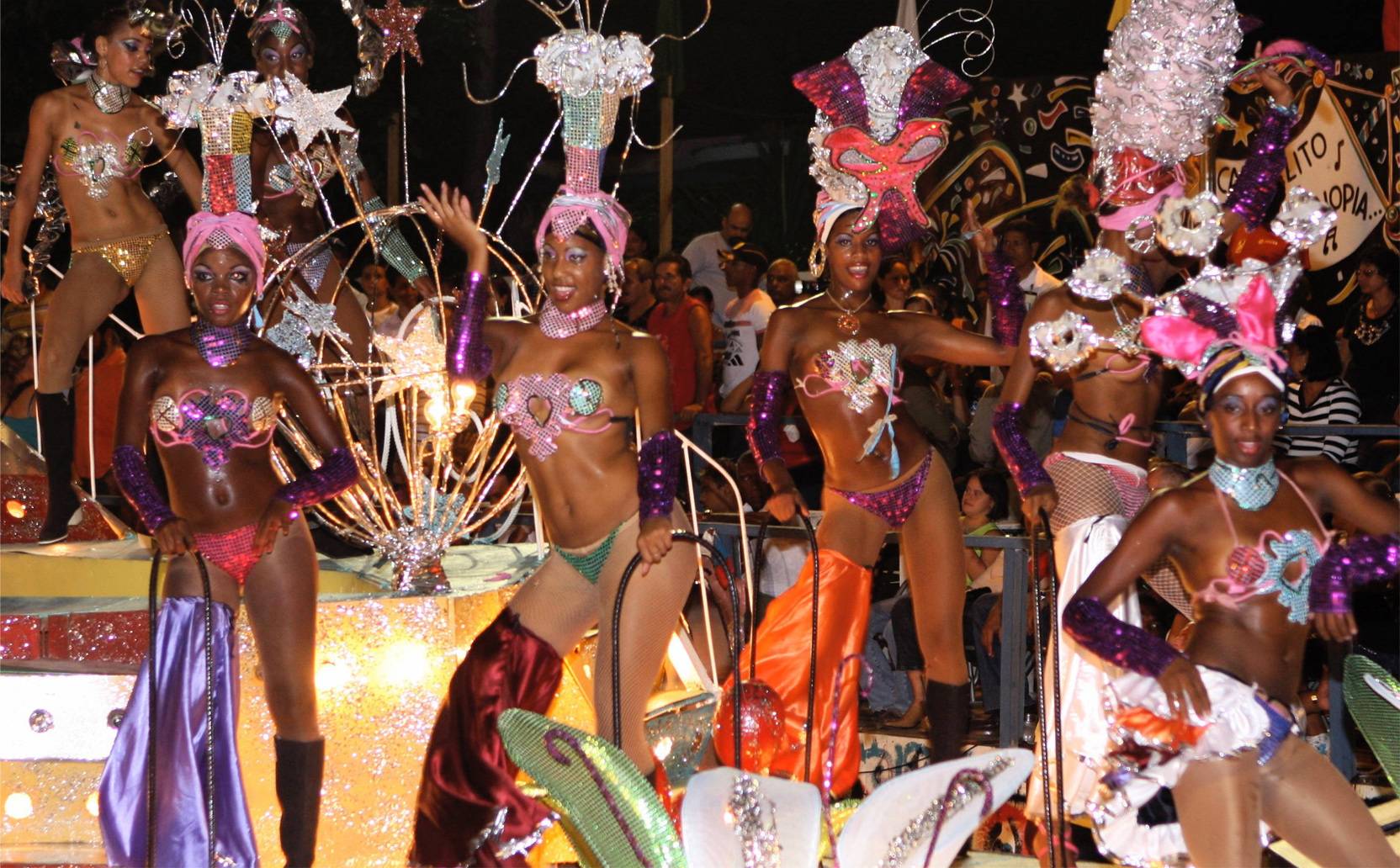
Festival do Caribe (Festival del Fuego) Julho
Santiago de Cuba sedia este festival de uma semana que celebra a música e a dança de todo o Caribe. Chamado por alguns de Festival del Caribe e por outros de Fiesta del Fuego, o evento se propõe a ser um espaço de intercâmbio entre as diversas manifestações culturais da região. Seu objetivo é fortalecer os laços entre os povos e nações caribenhas, destacando os elementos culturais em comum.
O festival conta com shows gratuitos ao ar livre, apresentações em locais fechados, desfiles de veículos decorados, cortejos com dançarinos em trajes espetaculares, barracas de comida, estandes de cerveja e até passeios de carroça puxados por bodes para as crianças.
Mais sobre o Festival do Fogo.
Carnaval de Santiago de Cuba Final de julho
O carnaval de Santiago de Cuba é considerado o mais tradicional, grandioso e vibrante de todo o país. Além da dimensão das comemorações que tomam conta da cidade, o desfile principal impressiona pelo colorido, pela alegria contagiante e pelo altíssimo nível dos músicos e dançarinos. Tudo isso acontece na época mais quente do ano, na cidade mais quente de Cuba — o que torna a experiência ainda mais intensa e marcante.
Durante o carnaval, há uma pausa simbólica para homenagear a data nacional de 26 de julho (veja o próximo evento abaixo), criando um momento de reflexão e solenidade antes que a festa retome sua energia exuberante e barulhenta.
Monte uma estadia personalizada em Santiago de Cuba com a Cuban Adventures.
Mais sobre o Carnaval de Santiago de Cuba.
Celebrações 26 de Julho 26 julho
O dia 26 de julho é a data mais importante do calendário revolucionário cubano. Um sentimento de fervor patriótico e revolucionário toma conta do país, e as ruas são decoradas com bandeiras comunistas, cartazes e grafites oficiais.
A data marca o aniversário do ataque mal-sucedido de Fidel Castro, em 1953, ao Quartel Moncada, em Santiago de Cuba, e também o nascimento do escritor e patriota cubano José Martí. Embora o ataque de Fidel tenha fracassado e o ditador Batista só tenha sido deposto em 1959, o dia 26 de julho simboliza o início do movimento que daria origem à Revolução Cubana.
No Quartel Moncada, os nomes dos mártires da revolução são lidos em voz alta e são feitos disparos de armas em sua homenagem. Discursos dos líderes cubanos são transmitidos por todas as emissoras nacionais de televisão.
Agosto
Carnaval de Havana Final de agosto
Embora seja considerada uma versão mais modesta em comparação ao tradicional carnaval de Santiago de Cuba, o Carnaval de Havana ainda oferece um espetáculo vibrante de música, dança, blocos de conga, fantasias coloridas, fogos de artifício, cerveja e rum. Os desfiles percorrem toda a extensão do Malecón, misturando a rica música tradicional cubana com sons mais contemporâneos.
Fique atento aos Muñecones — enormes máscaras usadas por dançarinos nos desfiles — acompanhados pelos faroleros, dançarinos que carregam um acessório multicolorido parecido com um poste de luz, girando-o continuamente enquanto dançam.
Os renomados carnavais de Cuba foram interrompidos por um tempo durante o chamado "período especial" nos anos 1990, quando o colapso da União Soviética pôs fim aos subsídios massivos à economia cubana, agravando a crise causada pelo embargo comercial dos Estados Unidos.
Setembro
Aniversário dos CDRs 28 de setembro
O CDR (Comitê de Defesa da Revolução) é a organização socialista de base nos bairros cubanos. Todo residente em Cuba faz parte de um CDR, que pode abranger apenas uma dúzia de casas em um quarteirão da cidade. Os CDRs realizam reuniões regulares para transmitir informações e atualizações do governo cubano, além de coordenar ações de proteção contra crimes e desencorajar comportamentos antissociais.
Cada CDR conta com moradores nomeados para funções de autoridade e responsabilidade, como a de presidente. As reuniões podem ser sérias e formais, mas também envolvem atividades e momentos de lazer para promover a integração entre vizinhos e fortalecer o senso de comunidade.
O aniversário do CDR é uma das celebrações mais animadas do ano e pode ser uma ótima oportunidade para visitantes conhecerem e interagirem com cubanos do dia a dia, especialmente se estiverem hospedados em uma guesthouse. A comemoração se assemelha a uma verdadeira festa de rua: uma caldosa, ensopado tradicional, é preparada em um grande caldeirão no meio da rua, em fogo de lenha, enquanto as crianças brincam e participam de jogos.
Outubro
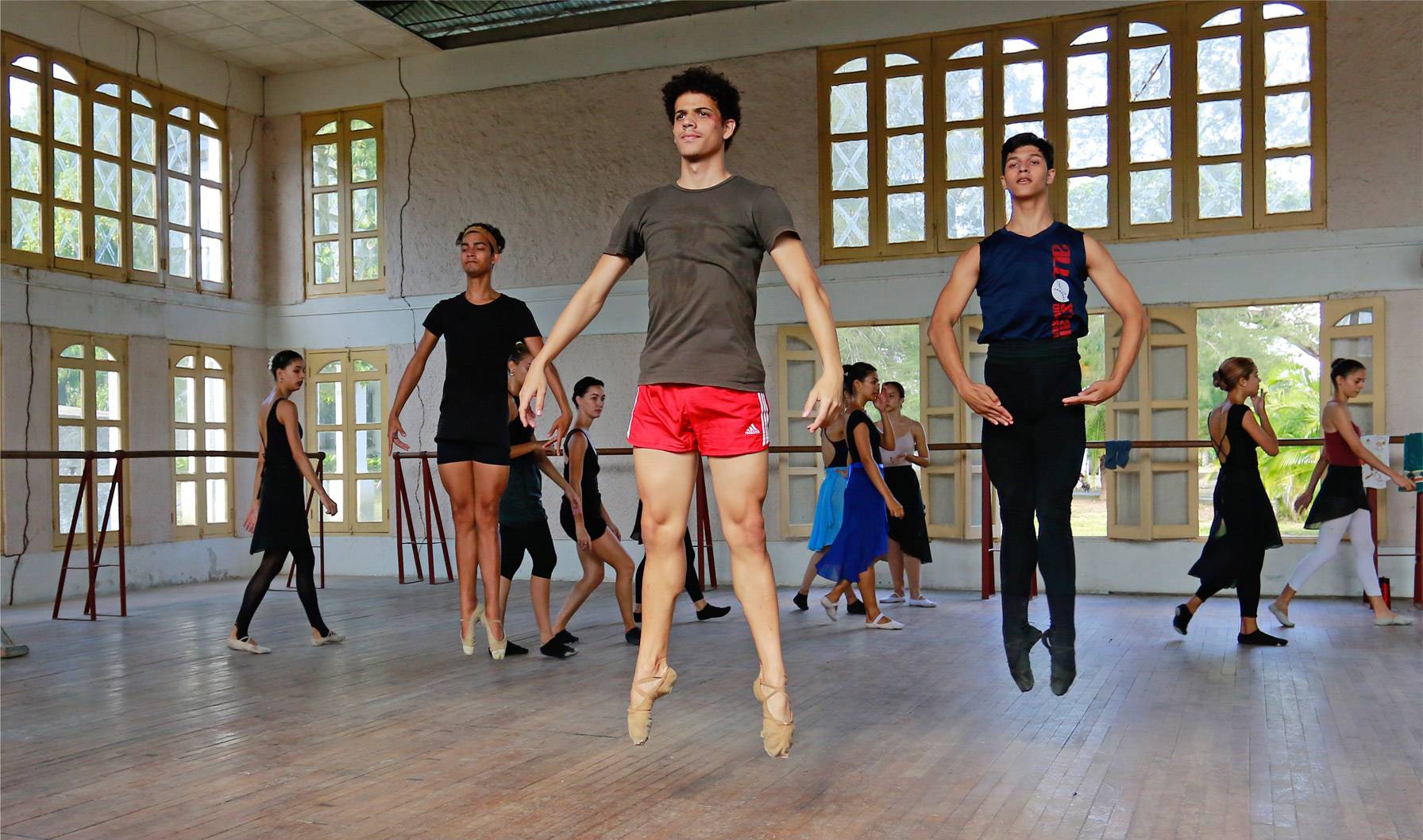
Festival de Balé de Havana Final de octubre - bienal
O balé é uma das formas de arte mais importantes em Cuba, e o balé cubano é reconhecido internacionalmente por seu alto nível técnico e artístico. O Festival de Balé de Havana é o principal evento de balé do país e tem prestígio mundial. Fundado em 1960 pela icônica Primeira Bailarina cubana Alicia Alonso, o festival é realizado a cada dois anos.
Companhias de dança renomadas de todo o mundo participam do evento, assim como, é claro, as excelentes companhias cubanas. Os principais palcos do festival são o Gran Teatro, recentemente rebatizado como Gran Teatro de La Habana Alicia Alonso, e o Teatro América.
Com o crescimento do prestígio e da importância do festival, a programação passou a incluir também exposições de arte, exibições de filmes e conferências, além de se expandir para outras cidades cubanas.
Festival Internacional de Coros Final de outubro
O Festival Internacional de Corais é realizado em Santiago de Cuba desde 1961. Grupos corais de várias partes do mundo se reúnem na cidade para se apresentar em uma grande variedade de espaços, incluindo praças públicas, escolas, hospitais e até fábricas. No entanto, o principal palco do evento — e também o local onde tudo começou — é a Catedral de Santiago. Foi ali que se registraram as primeiras composições corais conhecidas em Cuba, escritas por Esteban Salas, que foi mestre de capela da Catedral na segunda metade do século XVIII.
Apesar da origem religiosa, a música apresentada no festival vai muito além do repertório eclesiástico. Todos os estilos corais são bem-vindos e celebrados nesse encontro multicultural.
Festival Internacional Boleros de Ouro Outubro
O Festival Internacional Boleros de Oro celebra o popular gênero musical do bolero. Esse estilo teve grande influência em outros países da região, chegando até lugares distantes como Espanha e Japão. Sua primeira edição, realizada em Havana em 1987, é considerada o festival de bolero mais antigo da América Latina.
O que começou como uma celebração na capital logo se espalhou por todo o país, já que o bolero é um dos gêneros mais populares e amados em Cuba.
Locais: Teatros Mella e América, e UNEAC – Havana.
Novembro
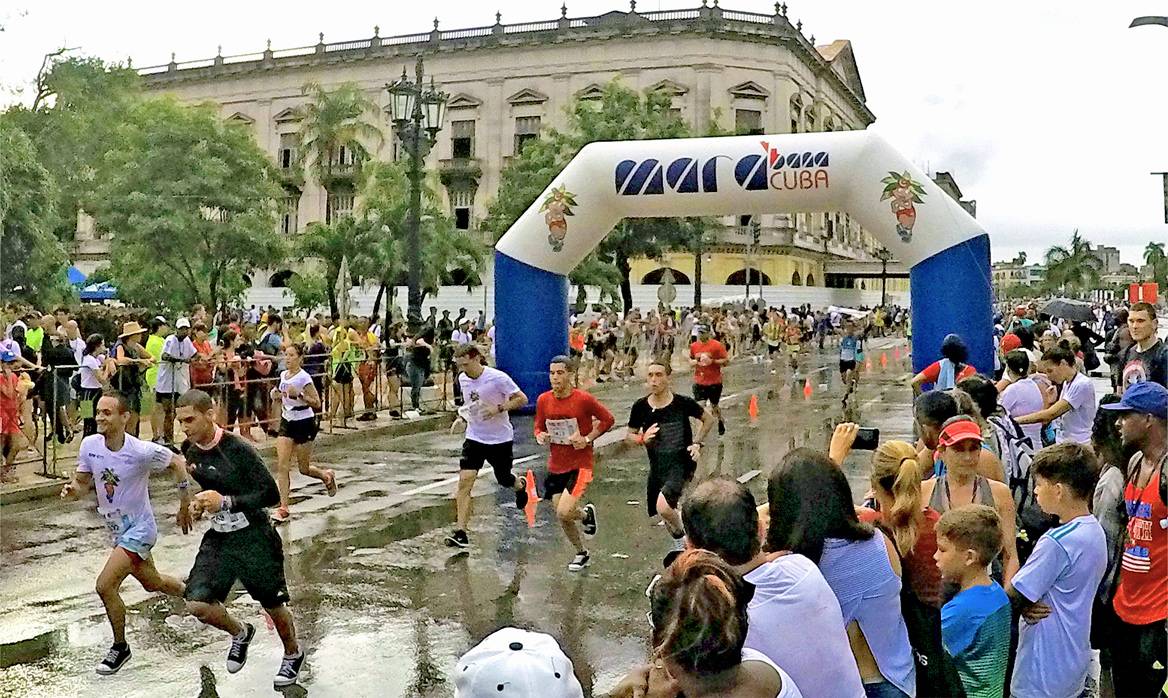
Maratona Marabana November 16
Essa maratona, realizada todos os anos em novembro, atrai milhares de caminhantes e corredores, incluindo atletas locais e internacionais de mais de 30 países. O percurso da prova passa por algumas das áreas mais bonitas de Havana, como Habana Vieja, Centro Habana e Vedado. Há opções de participação nas distâncias de maratona completa (2 voltas), meia maratona, 5 km e 10 km. Os prêmios são distribuídos nas categorias masculina, feminina e para pessoas com deficiência.
Um dia antes da Maratona, acontece o Maracuba, um projeto de corrida reconhecido internacionalmente, que mobiliza mais de 1 milhão de participantes. É o maior evento de corrida do país. Simultaneamente, pessoas de todas as idades, em centenas de comunidades, áreas remotas e regiões montanhosas, participam de provas de 3000 e 4000 metros, tornando a experiência verdadeiramente memorável.
A 39ª edição da Marabana será realizada no dia 16 de novembro de 2025.
Todos os anos, a Cuban Adventures participa com sua própria equipe na Maratona de Havana. Todos são bem-vindos para se juntar a nós! A participação inclui um almoço comemorativo com o time, e doamos US$ 1 por cada quilômetro corrido para a CeDA, uma ONG cubana de proteção animal. Inscreva-se aqui!
Festival de Teatro de Havana 8 a 16 de novembro
Esse festival pouco conhecido é uma excelente opção para quem é apaixonado por teatro e está em Cuba, embora a grande maioria das apresentações seja em espanhol. O evento oferece peças voltadas tanto para o público adulto quanto infantil, e também recebe grupos teatrais internacionais.
As apresentações ocorrem em diversos teatros espalhados por Havana, além de espaços culturais abertos. A programação inclui, além das peças, apresentações de dança, oficinas de teatro, conferências e exposições.
Festival JoJazz Novembro
Este festival de jazz destaca jovens talentos excepcionais desse gênero musical e é realizado no Teatro Amadeo Roldán. O icônico pianista cubano Chucho Valdés é a principal força por trás da criação do festival no circuito internacional do jazz, voltado para músicos e compositores com mais de 16 e menos de 30 anos de idade.
Em um gesto nobre de transmissão de legado às futuras gerações, os vencedores em suas respectivas categorias ganham a oportunidade de gravar com o próprio Chucho Valdés.
Festival Habana Clásica Novembro
Antigamente conhecido como Festival de Música Antiga Esteban Salas, este evento anual de música clássica celebra a vida e a obra do compositor cubano do século XVIII Esteban Salas. O festival teve início em 2003, ano que marcou os 200 anos da morte do compositor.
Salas trabalhou com diversos estilos da música clássica, incluindo o Medieval, o Barroco e o Renascimento. As apresentações acontecem em alguns dos espaços mais impressionantes de Havana, como igrejas, capelas, teatros e centros culturais.
Dezembro
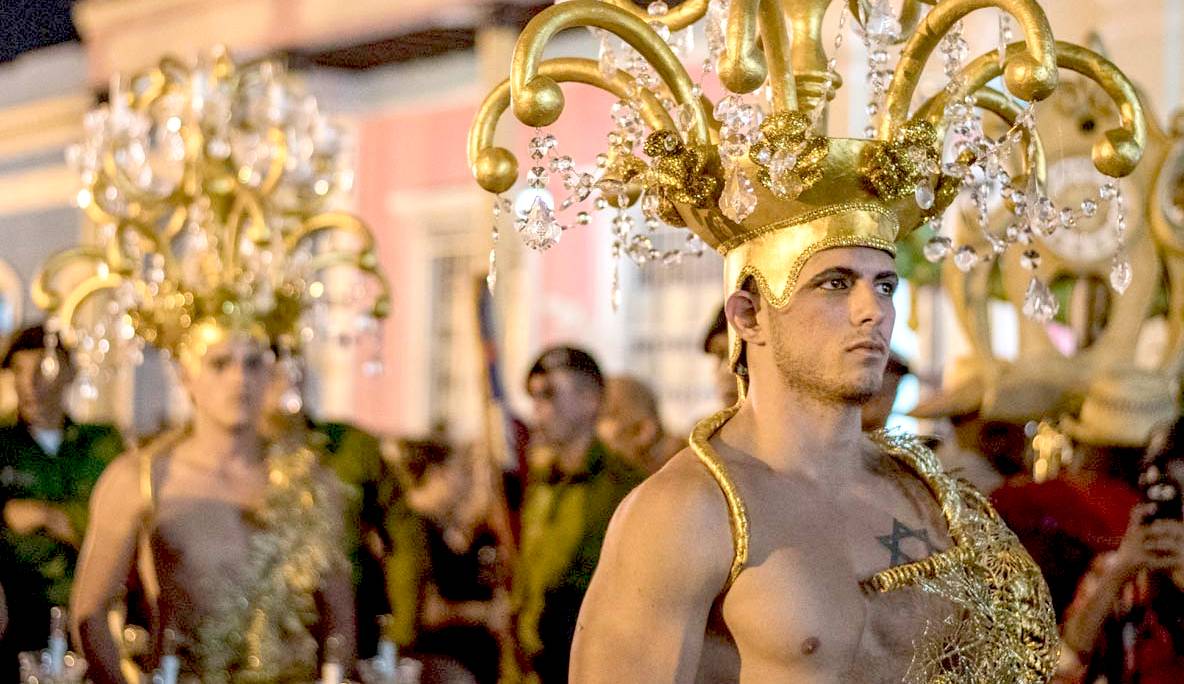
Festival de Cinema de Havana 5 a 15 de dezembro
Popular entre cinéfilos e profissionais do cinema, este festival também é conhecido como Festival Internacional do Novo Cinema Latino-Americano, ou Festival de Nuevo Cine Latinoamericano. Filmes de cineastas de toda a região do Caribe e América Latina são exibidos em diversos cinemas de Havana.
O festival abrange várias categorias, incluindo curtas-metragens, animações, documentários e longas-metragens, além de contar com uma categoria especial dedicada a cineastas cubanos.
O evento acontece desde 1979 e, em sua edição inaugural, teve a ilustre presença do renomado autor colombiano Gabriel García Márquez, que participou como jurado.
Aqui é o site oficial do festival: Festival Internacional del Nuevo Cine Latinoamericano
Parrandas de Remedios 19 a 24 de dezembro
A pequena cidade de Remedios é famosa por seu festival natalino, conhecido como “Las Parrandas de Remedios”. As celebrações são consideradas as mais antigas de Cuba e, por quem as conhece bem, também as mais agitadas e excêntricas.
Os eventos incluem desfiles de rua com grupos de percussão de rumba, músicas e versos, exibição de carros alegóricos e uma intensa e dramática competição de fogos de artifício.
Mais sobre as Parrandas de Remedios.
Charangas de Bejucal 24 a 26 dezembro, 1º de janeiro
A pequena cidade de Bejucal, nos arredores de Havana (a cerca de 50 minutos do centro), sedia este festival considerado o mais antigo da capital. Embora já tenha vivido dias de maior prestígio, atualmente o evento tem se resumido, em grande parte, a uma festa de rua desorganizada, com predominância de música gravada. Ainda assim, continua sendo bastante animado.
Os tempos de glória parecem ter ficado no passado, quando bandas de renome internacional, como Los Tambores de Bejucal, se apresentavam com seus ritmos vibrantes. Assim como nas Parrandas de Remedios, o festival de Bejucal gira em torno de uma rivalidade tradicional entre dois grupos de conga.
Réveillon em Havana 31 de dezembro
A maior festa de Réveillon em Havana acontece na impressionante Plaza de la Catedral, na charmosa Habana Vieja. A praça é transformada em um grande salão a céu aberto, com mesas montadas para um jantar especial que recebe cerca de 300 convidados.
Há open bar com vinhos, champanhe, cerveja e uma variedade de destilados, além de um jantar completo servido no local. A noite é embalada por um espetacular show ao estilo cabaré do famoso clube Tropicana.
